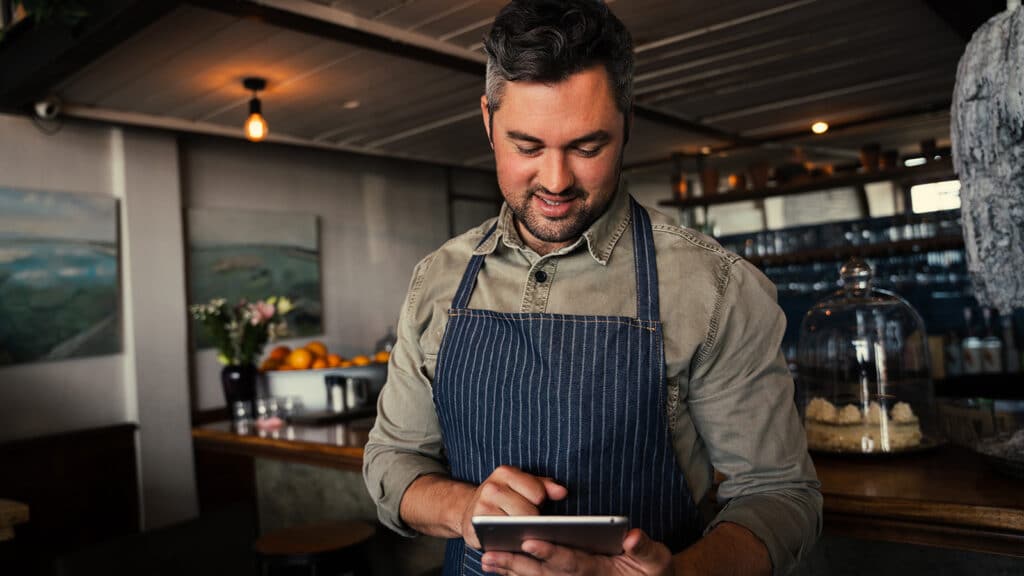The phone eats first – With over 3.03 billion individuals using social media and over 200 million posts with the hashtag: “#food”, restaurants have the opportunity to use social media to their advantage. Our restaurant social media management guide explains why it is vital to build a strong social media presence that attract your customer base. Social media makes it possible for restaurant owners to interact and create loyal customers wherever they are. This helps your business remain at the forefront of your customers minds even before hunger strikes.
Did you know that 72% of consumers have used Facebook to make the decision of which restaurant to eat at?
With that statistic in mind, think about all of the potential customers that are scrolling through social media at this exact moment. With potential customers dialed into various social media platforms, it is necessary to build an impactful restaurant social media strategy that will make your restaurant their first choice.
In this restaurant social media management guide we share a few tricks of the trade that can help restaurants develop a complete social media strategy.
Platform Perks
Our restaurant social media management guide shares how platforms each offer different perks that can benefit restaurants when used correctly. In order to make the best decisions for your business, we decided to go a step further and break down the top three most used social media platforms for the market – Facebook, Instagram, and Twitter.
Before posting, it is good to create a restaurant social media strategy that aligns with your business goals. Many restaurants find that creating a content calendar, which outlines when they should post and on what platforms is a great tool. Content calendars can help business owners clearly visualize what types of content they need to build out. For example, on the calendar a reminder to post every Friday at noon highlighting the weekend specials. (Content Calendar templates are readily accessible on Google!) When starting social media pages, remember to diversify the content that is being posted. Having curated lifestyle images illustrating happy customers is a great example of what restaurants can post other than food. Once a plan is in place and social media accounts are created, it is time to get started!
Let’s start with the OG: Facebook. Facebook offers the largest and most diverse audience of the three. With this platform you can be sure that customers of all ages are scrolling up and down on the homepage engaging with the curated content.
As a business owner, Facebook can attract new customers and retain loyal ones. In order to get started, first fill out all relevant information that pertains to your business – such as location, hours, phone number, and your business’s website URL. Customers can check in, leave a review, and even tag a location. When a customer performs any of these actions – a simple response and gesture of gratitude is an easy way to increase engagement and demonstrate to your customers that you care.
Aside from the basics, Facebook provides businesses with ample amounts of advertisement tools – such as, the ability to create targeted advertisements and boosted posts for additional impressions. These tools, have the ability to propel your restaurants marketing beyond that of your competitors. Creating new opportunities and expanding reach beyond your typical audience.
If you are looking for a place to house aesthetically pleasing, drool-worthy, photographs in one central location then Instagram is the platform for your business. Instagram makes it possible for restaurants to digitally place their best selling items in-front of their customers. Customers also tend to marvel at the idea of posting what they are eating on Instagram, to brag about the dining experiences to their followers. In fact, an entire influencer sector was derived from simply posting food pictures on Instagram. When you see your customers waving their phones over their food, it is a good idea to foster a relationship and motivate these consumers to post their images on Instagram and tag your restaurant. Once you restaurant is tagged in a post or story, feel free to repost it on your restaurants profile, this is known in the marketing world as, user-generated content.
UGC grants your business the chance to leverage your customers positive feedback in the form of content – this is a cost effective method of curating relevant content, which helps acquire additional impressions and expand a posts reach beyond a typical target audience. Another way to expand reach to potential customers and beyond, is by using hashtags effectively. Hashtags are a key tool when trying to expand beyond your following. Make sure to be creative whenever using hashtags, while #food works, creativity reigns supreme.
When it comes to Twitter, engagement is the be all end all. Twitter provides a platform where businesses can engage in a seamless flow of conversation with their customers. Using Twitter as a tool to respond to customer service needs demonstrates that you are dedicated to serving the needs of your customers through all channels of interaction. A fun way to increase engagement is by encouraging customers to communicate with your restaurant, you can do this by asking them what they want to see on the menu, what their favorite items are, or even how you can improve your service!
Restaurant Social Media Management Times to Post
Now that the lay of the land for social media strategy has been established, it’s time to talk about optimal times to post. For Facebook, business pages typically have the most successful campaigns and/or posts that are scheduled between 1pm and 4pm. To be even more specific, posting on Thursday through Sunday. Posting on the weekends is when your restaurant will gain the best metrics for organic engagement and reach on Facebook.
Sometimes it only makes sense to complicate things more right? That being said, the best times to post on Instagram are vastly different from its social media counterparts. The best times to post are during lunch or after the average workday (5pm-9pm), of course, this all depends on which time-zone your business is located in.
Last but not least – Twitter. Similar to optimal posting times for Instagram, lunch time yields the highest engagement rates. When posting on Twitter, it is key to produce worthwhile tweets and converse with your customers during the week. There is a significant drop-off in engagement on the weekends.
Now that we have bombarded you with tips and tricks, it is a good reminder that these are simply best-practices, if you notice something else working for your restaurant, stick with it!



